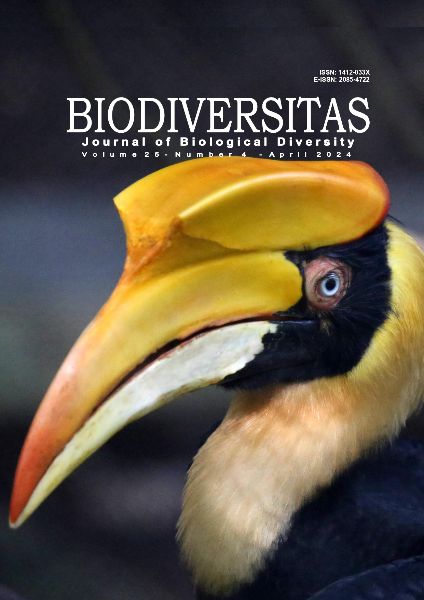The reproduction performance of catching Planiliza subviridis (Teleostei: Mugilidae) in different moon periods from Jepara Coast, Central Java, Indonesia
##plugins.themes.bootstrap3.article.main##
Abstract
Abstract. Yudiati E, Yuniarti T, Trianto A, Arifin Z, Ruliaty L, Soleh M, Naryaningsih A, Suryati. 2024. The reproduction performance of catching Planiliza subviridis (Teleostei: Mugilidae) in different moon periods from Jepara Coast, Central Java, Indonesia. Biodiversitas 25: 1823-1830. Mullets (Planiliza subviridis Valenciennes 1836) are highly promising species for aquaculture development. Information on the reproductive performance of wild-caught fish is crucial for enhancing mullet production. This study aimed to assess the gonadal maturity level of female mullets captured during full and new moon phases. Sampling using lift nets was conducted from June to July 2023, comprising 104 individuals, 51 during the new moon and 53 during a full moon. Fish caught during different moon phases were measured for gonad maturation level (GML) and morphometric parameters (body weight, total length, head length, body width, and head width), assessed for gonad somatic index (GSI), fecundity, and egg diameter. Over 50% of individuals were at GML III during dark moon phases, while during bright moon phases, only 10-15% were at GML III; GSI ranged from 0.6-15%. The fecundity of GML I and II females was higher during the full moon (220,212-395,000 eggs per individual) compared to the new moon, while GML III females during dark moon phases ranged from 225,000-250,000 eggs. Mullets exhibit increased reproductive output during the new moon phase and engage in synchronous spawning during moonlight cycles. Therefore, prospects for mullet culture appear promising, with cultivation and domestication suggested during new moon periods.

